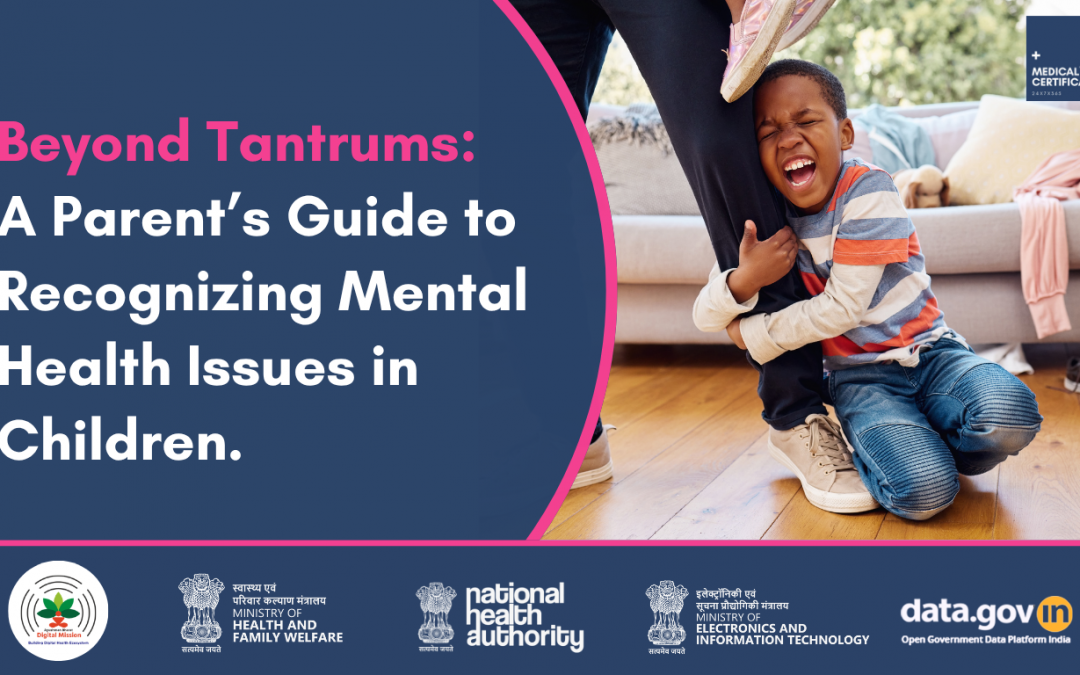Introduction
You’ve probably seen the signs.
A once chatty child suddenly goes quiet. They stop meeting friends they used to adore. Their mood shifts. They seem irritable, withdrawn, or just not themselves.
And as a parent or caregiver, you begin to wonder — is this just a phase or something more serious?
Here’s what many parents need to know but few are told early enough: children can and do experience mental health challenges, just like adults. But the signs are often subtle and easily dismissed as moodiness, growing pains, or disobedience.
Understanding these early indicators can help you support your child before their inner struggle becomes overwhelming. Because in many cases, early intervention changes everything.
Childhood Isn’t Always Carefree
We often imagine children as naturally happy, resilient, and carefree. And while that’s true for many, some children experience sadness that doesn’t fade, fears that linger, and anger that replaces joy.
Mental health issues don’t wait until adulthood. According to global research, one in five children experiences a diagnosable mental health condition each year. Shockingly, only a fraction of them receive professional help.
Why is that?
Because adults around them often rationalize their behavior with statements like “They’ll grow out of it,” “It’s just a phase,” or “They’re just acting out because of school pressure.” These explanations may sometimes hold partial truth. But often, they delay the support a child really needs.
Signs of Mental Health Issues in Children
Children rarely articulate their emotional struggles the way adults do. Instead, they express their pain through behavioral, physical, or emotional changes.
Changes in sleep patterns or eating habits can be early indicators. Your child might start having difficulty falling asleep, wake up frequently, or begin to eat significantly less than usual. These changes may be subtle but often reveal an underlying emotional imbalance.
Another common sign is withdrawal from friends or activities they once loved. A child who no longer wants to play, avoids social interaction, or loses interest in hobbies may be dealing with anxiety or depression.
Children also frequently report unexplained physical symptoms like stomach aches or headaches. These can often be expressions of internal emotional pain, especially when no medical cause is found.
Irritability and anger are often misunderstood. If your child is suddenly more argumentative, easily triggered, or seems persistently angry, it may be more than misbehavior. It could be a coping mechanism for overwhelming emotions they don’t yet know how to express.
Academic performance can also reveal mental health concerns. If your child starts to struggle in school, loses focus, or stops completing tasks, it might be linked to emotional distress.
Persistent worry or fear is another red flag. All children worry occasionally, but if your child seems constantly anxious, preoccupied with “what if” thoughts, or frequently panics, they may be experiencing a deeper anxiety disorder.
Negative self-talk should never be ignored. Phrases like “I’m stupid,” “Nobody likes me,” or “I hate myself” are not harmless expressions. They often stem from a low sense of self-worth or emotional distress and deserve careful attention.
Children Feel Deeply, Even Without the Words
A common misconception is that children are too young to experience real emotional challenges. In truth, children often feel stress, fear, grief, and rejection just as intensely as adults — if not more. The key difference is that they haven’t yet developed the vocabulary or coping skills to process what they feel.
From toddlers struggling with separation anxiety to school-age children facing bullying, academic pressure, or the effects of social media, today’s children are navigating an increasingly complex emotional landscape.
What Parents Can Do to Support Their Child
You don’t need to wait for a diagnosis to start offering support. If something feels off, trust your instincts. There are simple and compassionate steps you can take today.
Start by creating space for open, gentle conversation. Rather than asking “What’s wrong?” try saying “I’ve noticed you seem a little sad lately. Want to talk about it?” Framing the conversation with empathy rather than urgency encourages your child to open up.
Maintaining daily routines also provides children with a sense of stability. Consistent mealtimes, bedtimes, and daily rituals help create a safe emotional environment, especially when things feel chaotic on the inside.
Lead by example. Share your own feelings openly in a way that’s appropriate for their age. Statements like “I felt nervous about my meeting today” or “I had a tough day too” normalize emotional expression and teach children that it’s okay to feel.
Communicate with your child’s teachers or caregivers. Educators are often the first to observe behavioral changes in the classroom. Their insights can be extremely helpful in understanding how your child is doing socially and emotionally.
Most importantly, don’t hesitate to seek professional support. If emotional or behavioral changes persist for more than a couple of weeks, or if your child’s daily functioning is affected, consider reaching out to a child psychologist, counselor, or therapist. Therapy isn’t a last resort — it’s a safe, proactive step toward healing and emotional strength.
Supporting Mental Health Is a Form of Love
Recognizing mental health challenges in children isn’t about blame. It’s about awareness, connection, and compassion. Just as we wouldn’t ignore a persistent fever or limp, we shouldn’t ignore ongoing sadness, worry, or anger.
The earlier we notice, the sooner we can help — and the more resilient our children can grow to be.
Final Thoughts: Let Them Feel, Let Them Be Heard
Children don’t always need someone to fix everything. More often, they need someone who notices, who listens, and who says, “I’m here. You’re not alone.”
Mental health support begins with empathy. With small observations, gentle conversations, and the courage to ask for help when needed, we can build stronger, emotionally healthier children — and a brighter future for them all.

